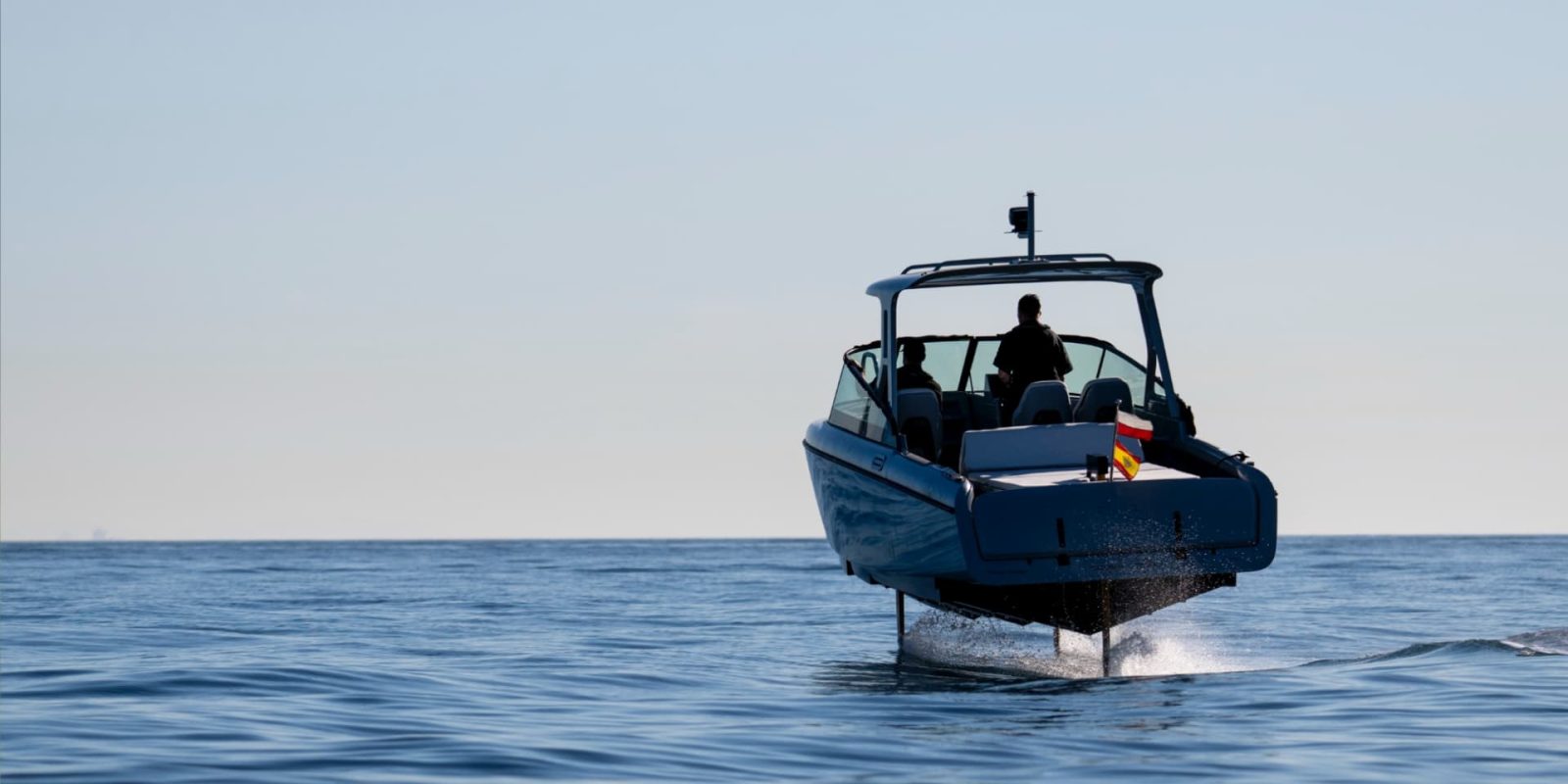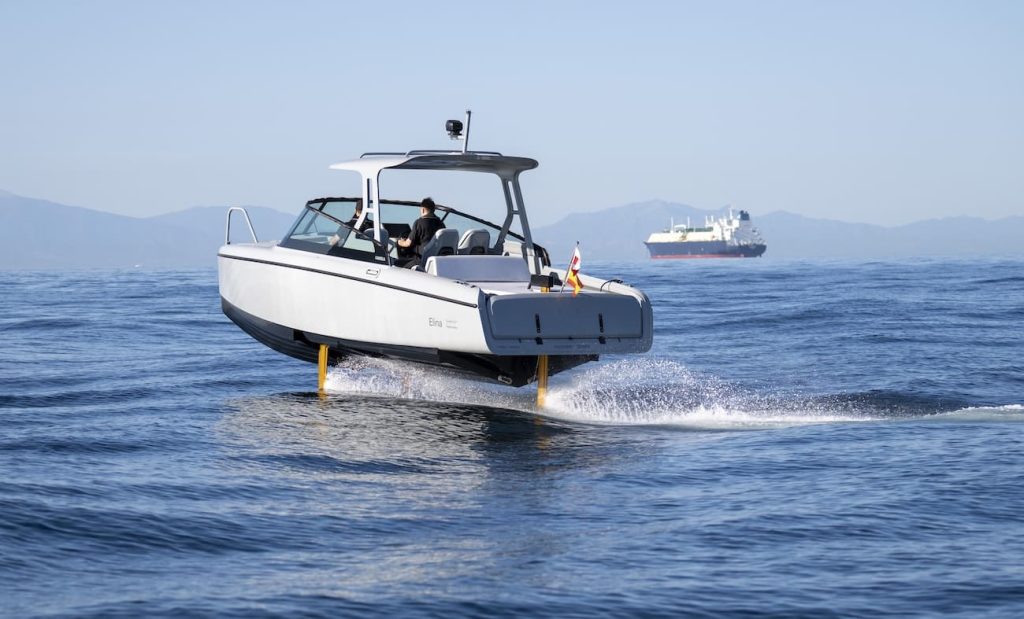
In a historic first for electric marine travel, a Swedish team has successfully crossed the Mediterranean in an electric boat – and not just any electric boat, but one that flies. The voyage marks a major milestone in the future of clean maritime transport and shows that electric boats aren’t just ready for lakes and calm harbors – they’re ready for open sea.
The vessel used to perform the major maritime feat was the Candela C-8 Polestar Edition, a sleek hydrofoil electric boat that quite literally lifts out of the water as it gains speed. Its computer-controlled hydrofoils are the only part of the boat that remains in the water, helping it reduce its energy usage by around 80% compared to traditional vessels.
Piloted by Candela CEO Gustav Hasselskog, the C-8 flew across the 24-nautical-mile Strait of Gibraltar from Sotogrande, Spain to Ceuta, North Africa. The entire crossing took just over an hour – matching the speed of traditional fast ferries, but with a fraction of the energy use, and none of the emissions.
Once it docked in Ceuta and recharged, the C-8 turned around and did it all over again, making the return trip the same day.

This was no calm lake cruise. The Gibraltar Strait is known for strong currents and choppy seas where the Atlantic meets the Mediterranean – conditions that can toss small boats around and churn stomachs. But the C-8’s computer-controlled hydrofoils counteract wave motion in real-time, adjusting the wing angles up to 100 times per second to keep the ride stable and smooth. “We couldn’t feel the waves, while the photo boat was bouncing quite a bit,” said Hasselskog.
For Candela, the mission was more than a publicity stunt. The demonstration was designed to prove the viability of future routes using Candela’s upcoming P-12 electric ferry, a 30-passenger hydrofoiling vessel already conducting ferry service in Stockholm. By showing that a battery-powered boat could handle the Mediterranean, the company is signaling its readiness to take on short regional ferry routes currently served by large, polluting diesel ferries.
“There’s a clear need for fast, clean, and efficient travel across the Mediterranean,” said Hasselskog. “We can help meet this demand, working alongside existing operators to boost connectivity and cut emissions.”

The potential impact is huge. The Strait of Gibraltar alone sees more than 3.5 million annual crossings, mostly using large ferries focused on vehicle transport. That leaves many coastal communities underserved. With vessels like the P-12, Candela envisions a future of direct, nimble electric ferry routes – faster, cheaper, and far less polluting.
Speaking of cheaper: the entire Gibraltar crossing consumed just 40 kWh of energy – about €8 or US $9 worth of electricity. The similarly sized gasoline photo boat that paced the Candela used 50 liters (13 gallons) of fuel, costing around €90 (US $102). That’s more than a 10x savings on fuel alone, not even counting the massive reductions in maintenance and emissions.
Candela partnered with Avangreen, a clean energy company behind Ceuta’s largest solar project, for the demonstration. The two companies are working together to promote a new generation of sustainable marine infrastructure in the region.

The Candela C-8 Polestar Edition, used in the crossing, is a premium version of the C-8 developed in collaboration with EV automaker Polestar. It features a 69 kWh battery and fast charging capability – up to 80% in 30 minutes – and has a range of 57 nautical miles at 22 knots, currently making it the longest-range and fastest-charging electric boat in the world.
Top comment by Ruaraidh
Not to mention that a great many European water cities eg Venice, Amsterdam etc already have EV only boating mandates in place so the clock is ticking and in some cases has already struck for ICE powered boating.
Even the foils on this special edition are painted in Polestar’s iconic Swedish gold, a nod to the performance design language shared with their cars.
Electrek’s Take
The Mediterranean Sea is my backyard (ok, technically it’s a 10-minute bike ride away), and so anything that cleans up this beautiful body of water is A-OK in my book. A couple years ago, a leaking boat left a massive oil trail on our beaches for hundreds of nautical miles, and that stuff is close to impossible to fully clean up. The electrification of the marine transport industry can’t come soon enough.
Now with additional Candela ferry routes already in planning in Berlin, Lake Tahoe, New Zealand, and Saudi Arabia’s NEOM project, this historic Mediterranean crossing shows just how close we are to a cleaner, quieter marine future.
And if this is what the electric boating revolution looks like, I think we’re all ready to come aboard!
FTC: We use income earning auto affiliate links. More.



Comments